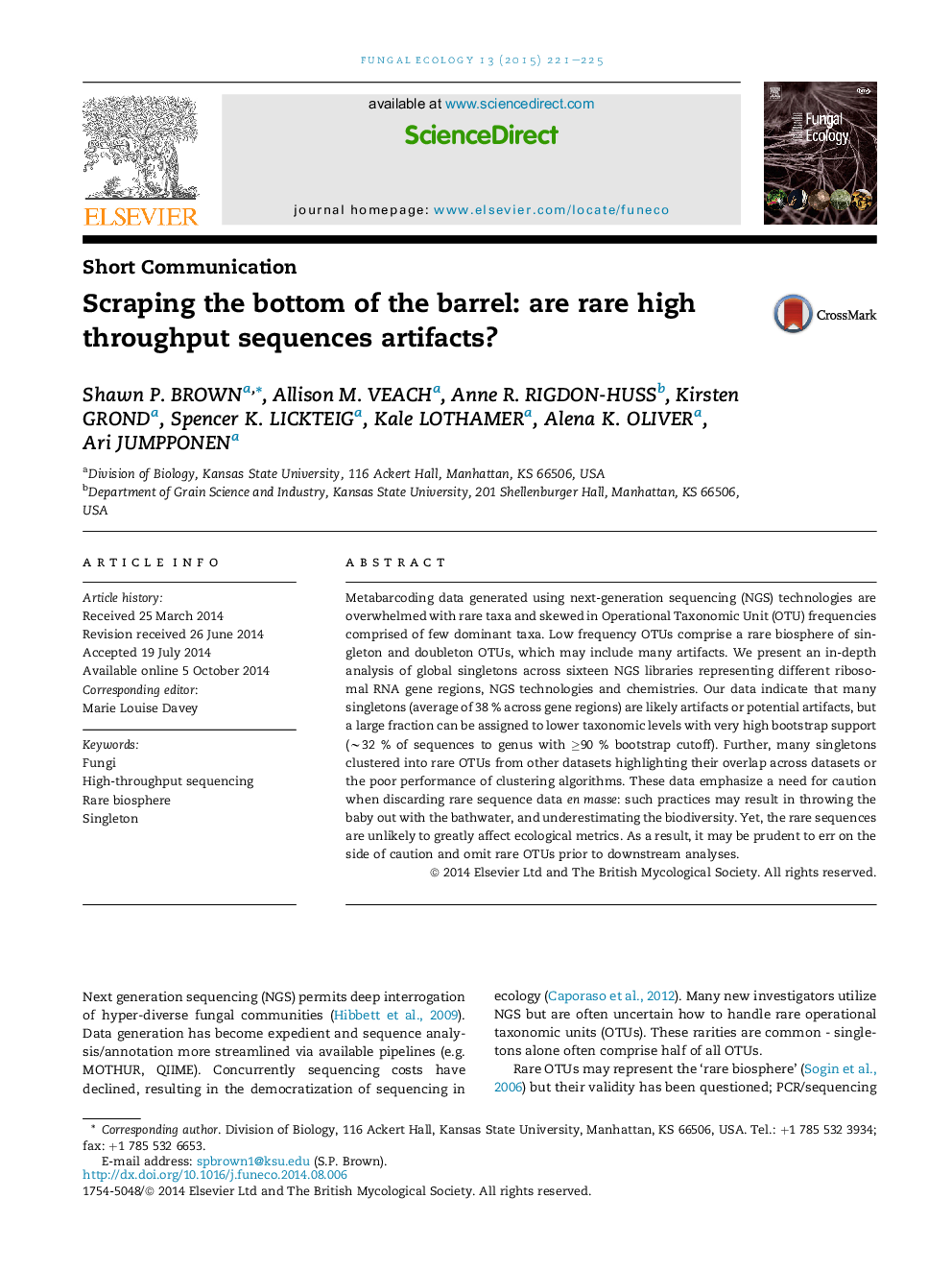| Article ID | Journal | Published Year | Pages | File Type |
|---|---|---|---|---|
| 2053555 | Fungal Ecology | 2015 | 5 Pages |
Metabarcoding data generated using next-generation sequencing (NGS) technologies are overwhelmed with rare taxa and skewed in Operational Taxonomic Unit (OTU) frequencies comprised of few dominant taxa. Low frequency OTUs comprise a rare biosphere of singleton and doubleton OTUs, which may include many artifacts. We present an in-depth analysis of global singletons across sixteen NGS libraries representing different ribosomal RNA gene regions, NGS technologies and chemistries. Our data indicate that many singletons (average of 38 % across gene regions) are likely artifacts or potential artifacts, but a large fraction can be assigned to lower taxonomic levels with very high bootstrap support (∼32 % of sequences to genus with ≥90 % bootstrap cutoff). Further, many singletons clustered into rare OTUs from other datasets highlighting their overlap across datasets or the poor performance of clustering algorithms. These data emphasize a need for caution when discarding rare sequence data en masse: such practices may result in throwing the baby out with the bathwater, and underestimating the biodiversity. Yet, the rare sequences are unlikely to greatly affect ecological metrics. As a result, it may be prudent to err on the side of caution and omit rare OTUs prior to downstream analyses.
